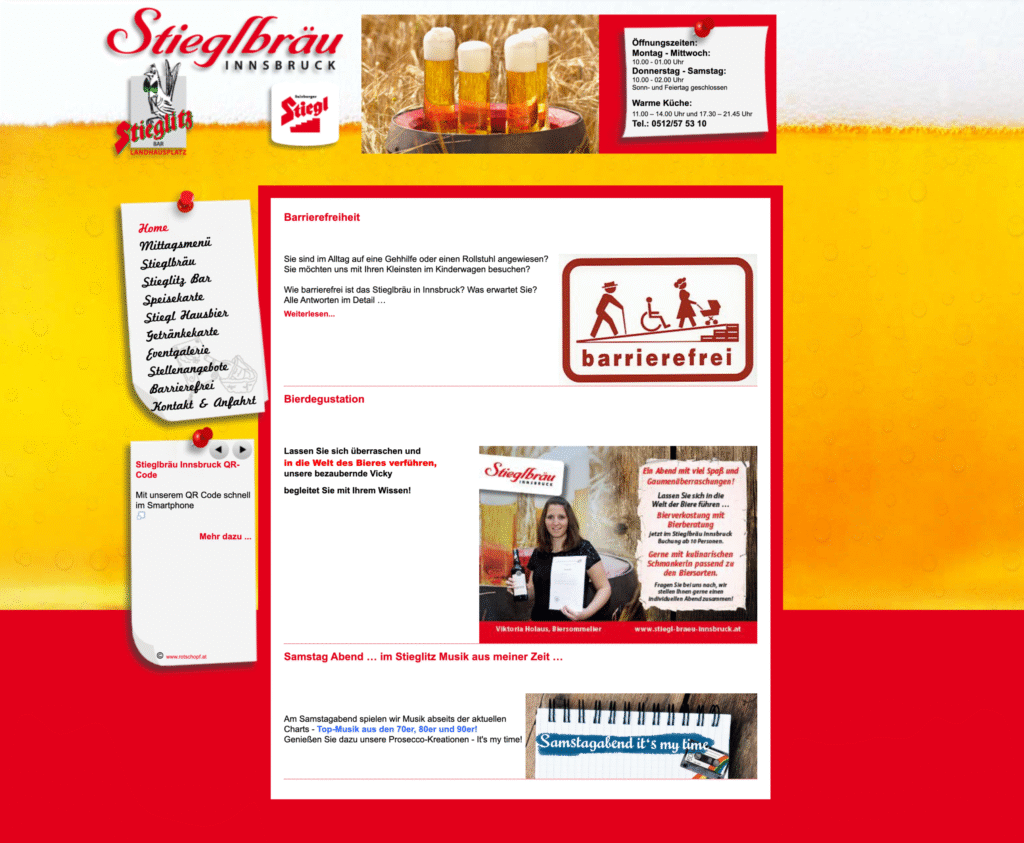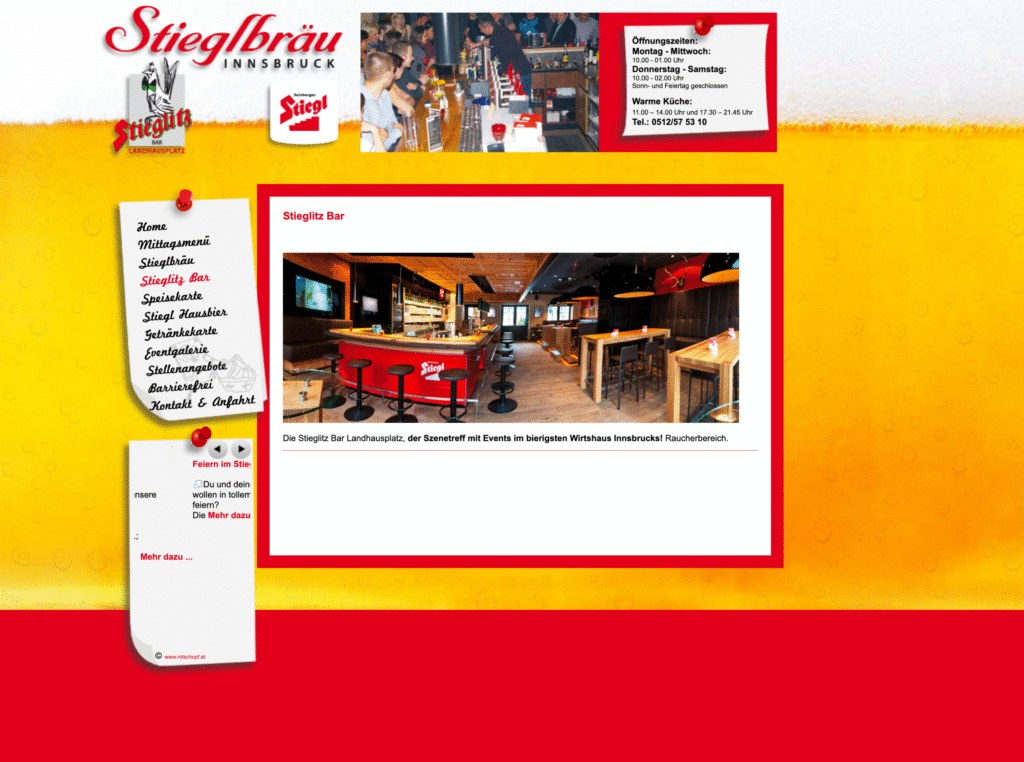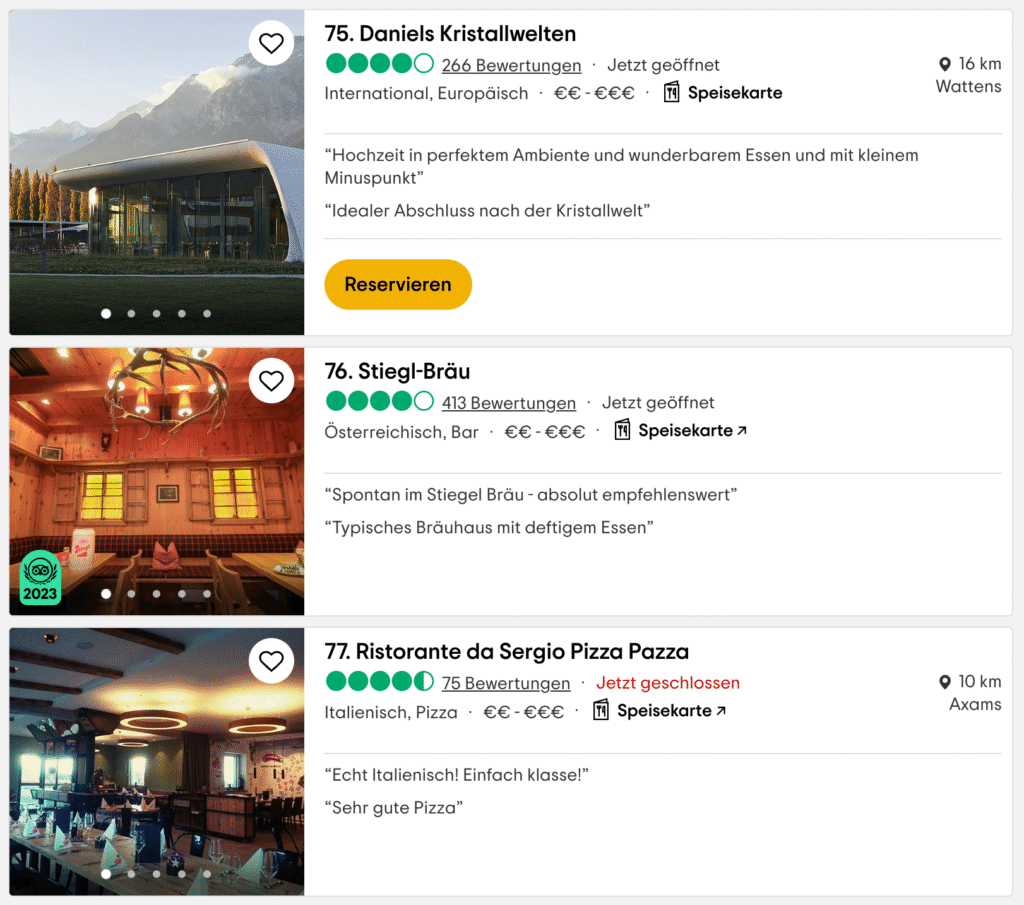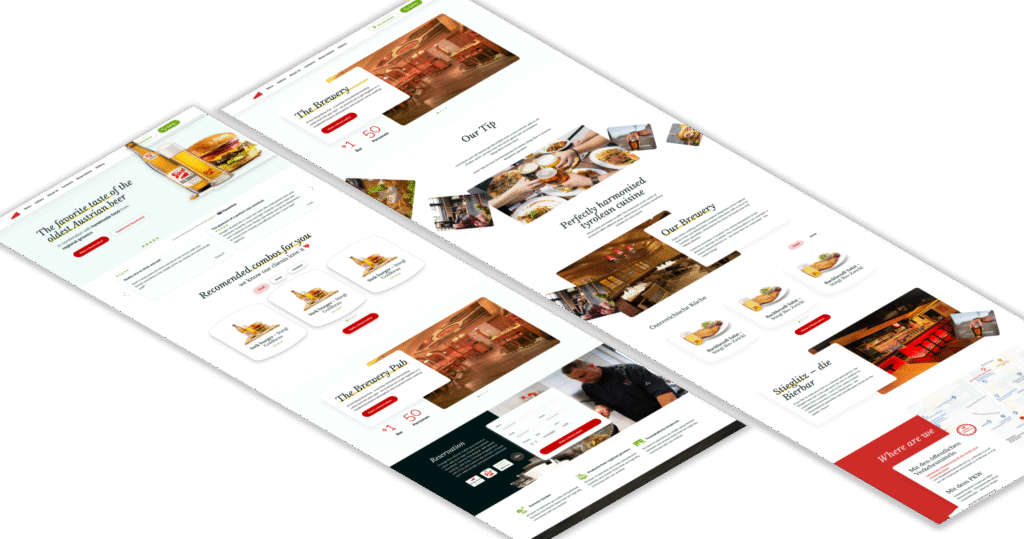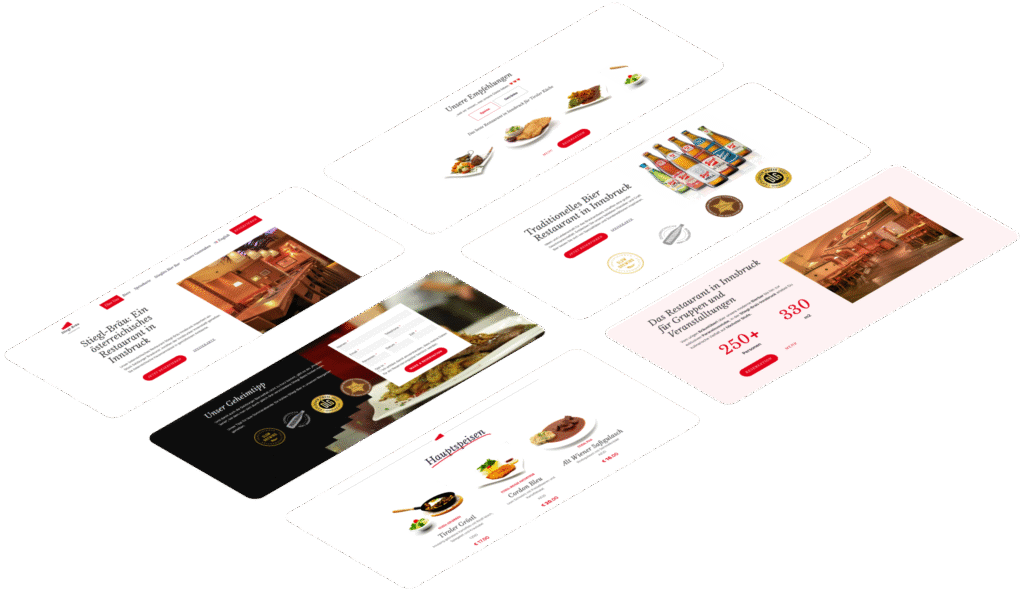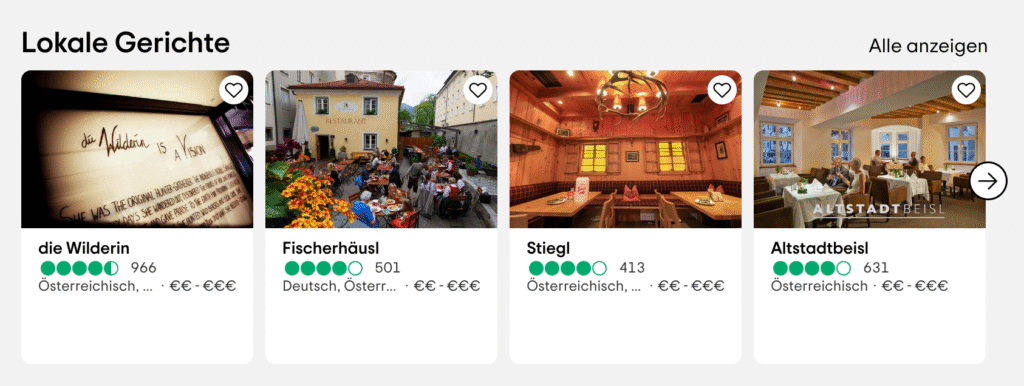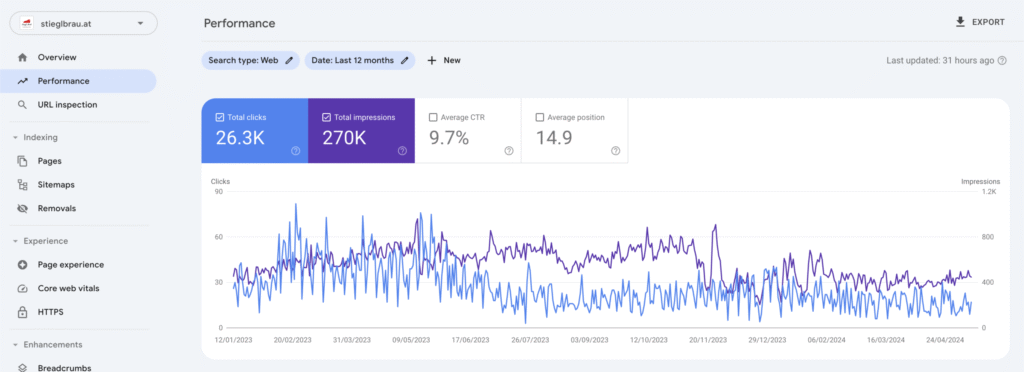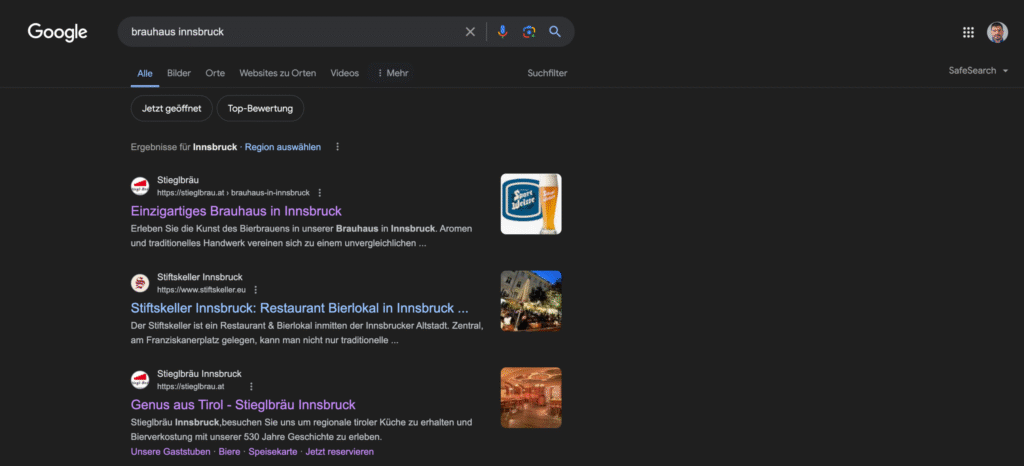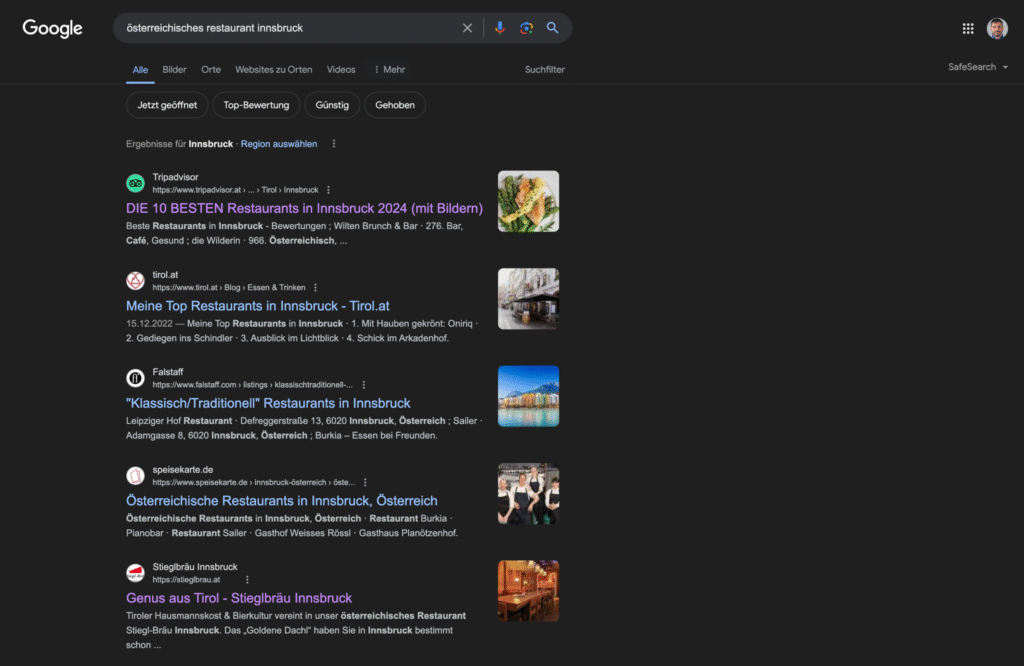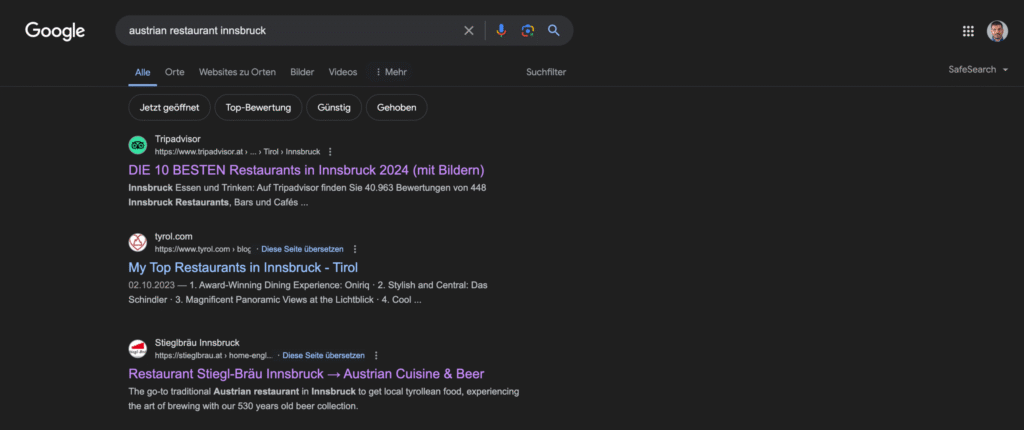full service marketing for Stieglbräu
From 0 to Hero
I have managed the digital presence of Stieglbräu Innsbruck since 2019. After years of negligence, the new owner decided that it’s necessary and quite urgent that a complete overhaul of the digital toolset is needed.
- website, social media account
- online channels
- CRM functionality
- online sales
- local visibility & SEO
not really existent digital activity
The Before
Starting at ground zero with Stieglbräu Innsbruck with some major challenges. The digital space has been neglected for more than 10 years.
❌ no online sales
❌ no online reservation possibility
❌ no traffic
❌ low in gastronomy channels – TA, Google, Yelp
❌not responsive
❌ no imagery
omnichannel
The Strategy
Since we were starting practically on a blank piece of paper we decided to go out on our update strategy without too many constraints which itself posed a challenge since we didn’t have well established channels and prior data insight so deciding on priorities lied solely on the experience I had previously. The strategy included.
- website & social media optimization
- content creation
- online customer support
- features for process automation – online booking system
- SEO and online sales
4 months later
The After
Just a reminder that during those 5 years, we got hit by the pandemic and the gastronomy sector was one of those hit the hardest, so the positive impact of this initiative was very welcome to help Stieglbräu go through these challenging times. Although daunting I have managed to achieve tremendous results in just 4 months.
- 25 - 75 clicks daily
- 75 - 100 direct sales daily with average value of €35
- Top 10 in Tripadvisor
- Leader for tourists, events and groups in the area


Let’s create something great together.



